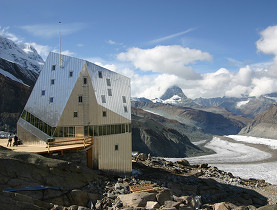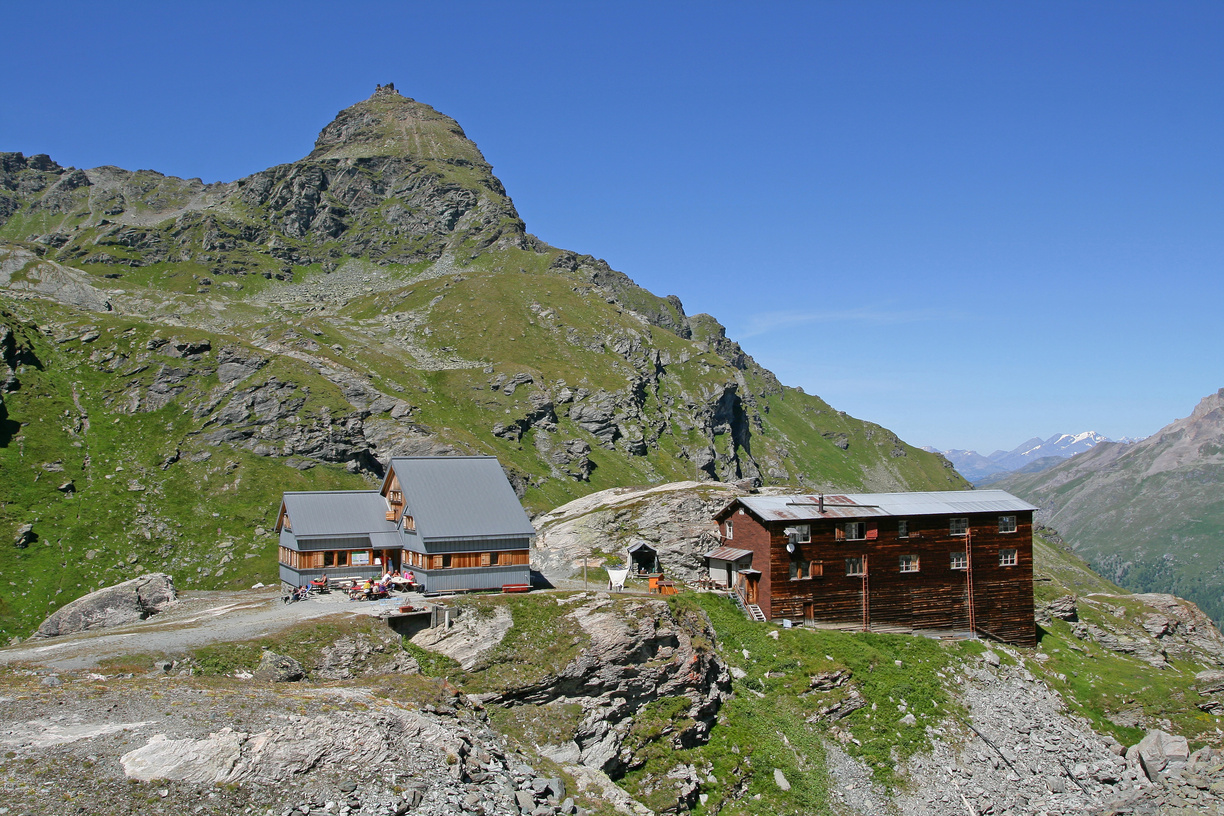High-tech hut suffers from success

The Swiss Alpine Club’s Monte Rosa hut above Zermatt has failed to meet the energy targets set out during its construction, having to rely on diesel generators to supply enough power for the many climbers and walkers staying there.
The much-vaunted high-tech building was supposed to produce 90 per cent of its energy from solar panels, with a generator fuelled with a few hundred litres of rapeseed oil used as backup during bad weather. Instead, the generator has been running fulltime, using around 7,000 litres of diesel during the climbing season.
Since the hut opened to the public in 2010, it has become a major attraction, with climbers using it as a base for summit attempts and hikers now considering it a destination in its own right.
“During the first two seasons, we had nearly 11,000 overnight stays, far more than we expected,” said Peter Planche of the Monte Rosa section of the Swiss Alpine Club (SAC). The building (see 2009 archive video below) can house 120 guests in its 19 bedrooms.
The hut’s green credentials have taken a further beating. Wastewater treatment is supposed to be carried out in a special onsite facility, but because of a clogged filter, water used in the kitchens and the toilets has been released into the snow behind the building since last winter.
Planche told Swiss public radio SRF that collecting the wastewater and transporting it by helicopter to the valley below would be “nonsense” ecologically speaking. The dirty water itself is not toxic, he added.
Repair work
Authorities in canton Valais disagree however and have asked the SAC to repair the facility, the first of its kind at such an altitude – 2,883 metres – or face a fine.
But the task at hand is not easy according to the specialists who designed it. “Space is restricted there and we cannot use more power to run pumps,” explained Bastian Etter, project coordinator at the Swiss Federal Institute of Aquatic Science and Technology (EAWAG), which is advising the hut’s management.
The company that built the wastewater treatment system has announced it will try to fix the problem next week.
Zurich’s Federal Institute of Technology (ETHZ), which developed the hut concept in collaboration with the SAC, has acknowledged that there have been problems but also says that the situation is not as bad as it might seem.
Heat production has reached its target according to the university. “The thermal solar collectors cover nearly 100 per cent of the hut’s heating requirements,” it added in a statement to SRF.
Power production has been more problematic, mainly because wastewater treatment required more electricity than expected. ETHZ said it was looking at improving energy management at the hut in collaboration with the SAC and other partners.

In compliance with the JTI standards
More: SWI swissinfo.ch certified by the Journalism Trust Initiative










You can find an overview of ongoing debates with our journalists here . Please join us!
If you want to start a conversation about a topic raised in this article or want to report factual errors, email us at english@swissinfo.ch.